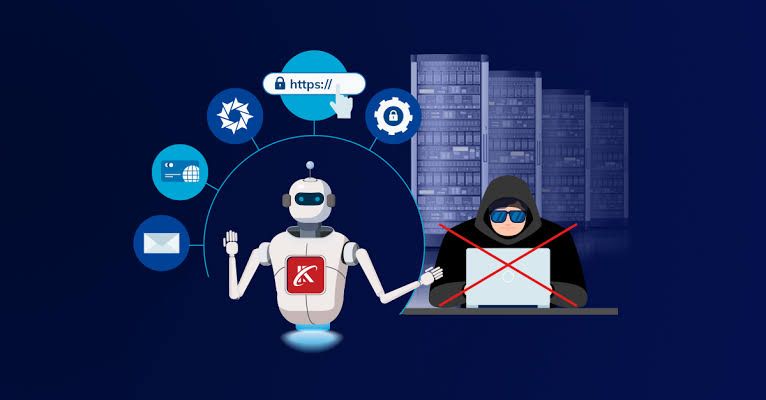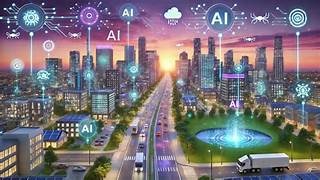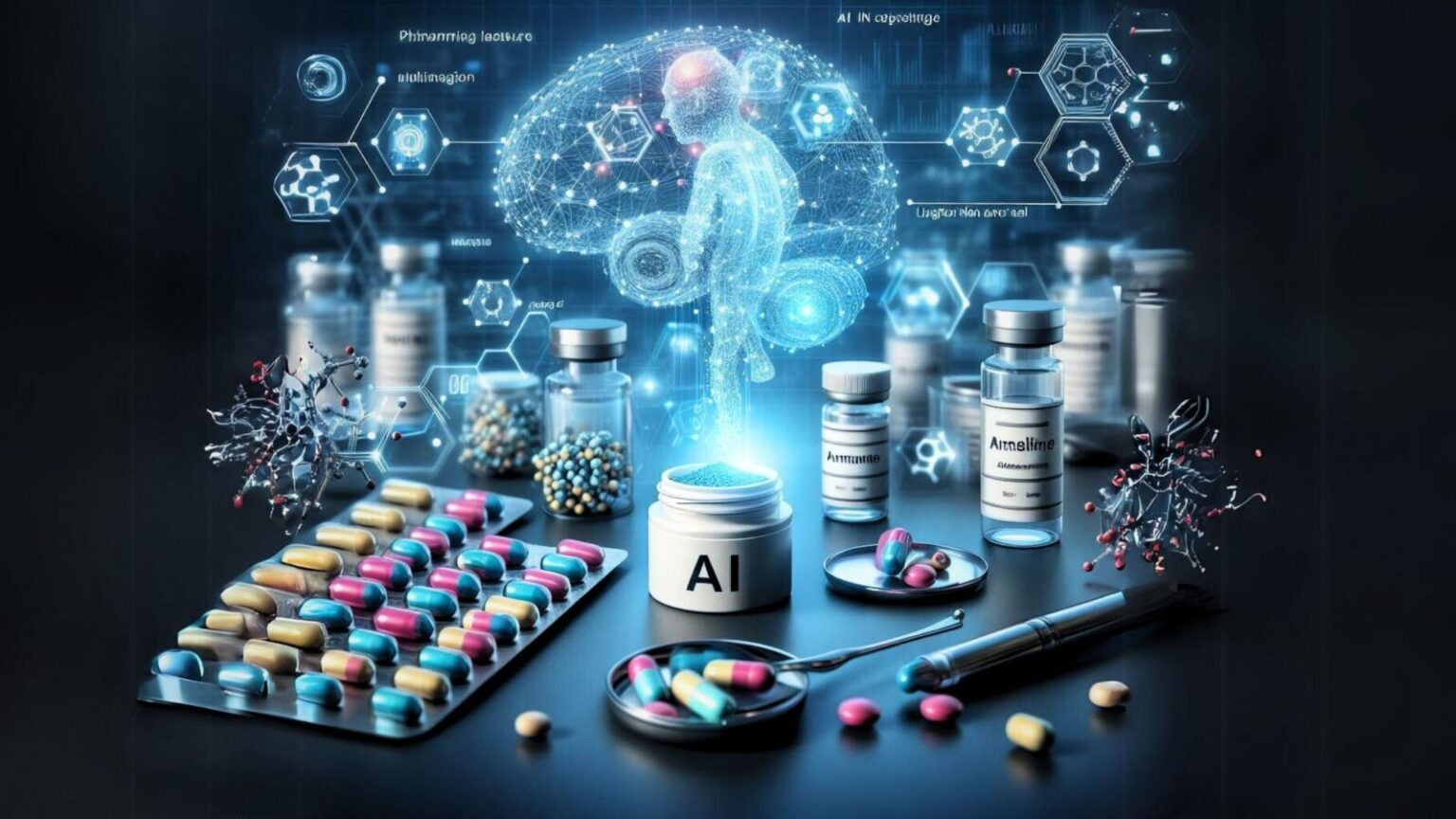
Microbiome computing: sensors that monitor gut / skin microbiome and respond.
Microbiome computing represents a revolutionary convergence of biotechnology, artificial intelligence, and biosensing, enabling real-time monitoring of the gut and skin microbiome. These smart sensors not only detect microbial changes but can respond dynamically, offering personalized healthcare, preventive treatments, and lifestyle optimization, marking a transformative shift toward adaptive, data-driven, and proactive management of human health and wellness.
✨ Raghav Jain

Introduction: The Age of Living Sensors
The human body is a walking universe of microorganisms. Over 100 trillion microbes—bacteria, fungi, and viruses—inhabit our gut, skin, and other organs, forming the human microbiome. This microscopic ecosystem is vital to our health, influencing digestion, immunity, mental health, and even body odor. For decades, scientists have studied these microbes in laboratories, but the next revolution is real-time, in-body monitoring—known as microbiome computing.
Imagine wearable or ingestible sensors capable of continuously reading the molecular signatures of your gut or skin microbiome and sending data to an AI system that predicts disease before symptoms arise. That’s not science fiction anymore—it’s the foundation of microbiome computing.
This emerging field integrates biosensing, machine learning, and synthetic biology to create systems that can monitor, interpret, and even manipulate microbial activity in real time. The implications range from early disease detection to personalized nutrition, skincare, and even mental wellness interventions.
The Human Microbiome: A Living Computer
The term microbiome refers to the collection of microorganisms living on and inside the human body. The gut microbiome alone contains more genes than the human genome by a factor of 150. These microbes interact through biochemical signals, forming a dynamic and adaptive network that behaves much like a living computer.
- Gut Microbiome: It helps digest food, produce vitamins, regulate immunity, and influence brain function through the gut-brain axis.
- Skin Microbiome: It acts as a barrier against pathogens, regulates inflammation, and even affects how products like creams or medications interact with your skin.
Traditional approaches like stool testing or swabs can only provide snapshots. But microbiome computing aims for continuous monitoring—turning the human body into a live data system.
Microbiome Sensors: The Bridge Between Biology and Technology
To build a computing system from the microbiome, we first need sensors that can interpret biological information in real time. These are no ordinary devices—they are hybrid systems combining nanotechnology, biochemistry, and machine learning algorithms.
1. Gut Microbiome Sensors
Gut sensors are often ingestible capsules that can travel through the digestive tract and transmit data about microbial activity, pH levels, metabolites, and even bacterial DNA. Some examples include:
- Smart Pills: Developed by companies like Atmo Biosciences and Proteus Digital Health, these capsules collect chemical and microbial data from inside the gut.
- Synthetic Biological Sensors: Engineered bacteria that light up or produce specific signals when they detect changes in gut chemistry (like inflammation or infection).
- Microfluidic Chips: Miniaturized labs that analyze microbial samples directly inside the capsule before sending results wirelessly.
These devices can detect patterns linked to diseases like inflammatory bowel disease (IBD), colon cancer, or food intolerances long before traditional diagnostics.
2. Skin Microbiome Sensors
On the skin, biosensors can be embedded in wearables, patches, or smart fabrics. These devices detect microbial imbalances or infections and provide feedback to the user or healthcare provider.
- Electronic Tattoos and Patches: Devices that sense skin pH, moisture, and bacterial composition.
- AI-Powered Skincare Devices: Some prototypes can adjust skincare formulations based on microbiome readings.
- Bio-Responsive Textiles: Future fabrics may release anti-inflammatory or moisturizing compounds when microbial imbalance is detected.
Together, these sensors form the foundation of microbiome computing—reading biological signals, interpreting them, and triggering smart responses.
How Microbiome Computing Works: The Bio-Digital Loop
Microbiome computing operates through a closed-loop system, combining biological sensing, data interpretation, and automated response.
1. Sensing:
Sensors detect microbial signatures such as metabolites, enzymes, or DNA fragments in real time.
2. Computing:
AI models analyze the sensor data to determine what is happening in the microbial ecosystem—whether it’s balanced, inflamed, infected, or changing due to diet or stress.
3. Responding:
Depending on the analysis, the system can trigger interventions such as:
- Releasing probiotics or antimicrobial compounds from within a capsule.
- Sending alerts to your smartphone or physician.
- Adjusting your personalized nutrition or skincare recommendations.
This feedback loop is often called a “bio-cybernetic interface”—a real-time conversation between human biology and artificial intelligence.
Applications in Medicine and Health
The potential uses of microbiome computing are enormous. Below are key domains where this technology could transform human health:
1. Personalized Medicine
Microbiome sensors can determine how individual gut or skin ecosystems respond to drugs. For example:
- Detecting antibiotic overuse or microbial resistance.
- Predicting adverse drug reactions based on microbiome profiles.
- Adjusting medication doses in real time.
This leads to precision therapy, where treatment is customized for each person’s microbiome.
2. Nutrition and Weight Management
Your microbiome affects how you digest carbohydrates, fats, and proteins. Smart gut sensors can track how your body responds to specific foods, allowing AI-driven diet recommendations that actually work for your biology.
3. Mental Health and the Gut-Brain Axis
Research has shown that gut microbes produce neurotransmitters like serotonin and dopamine. Microbiome computing could track these changes and help predict or manage conditions like depression, anxiety, and stress-related disorders.
4. Dermatology and Cosmetic Science
Skin microbiome sensors can identify early signs of acne, eczema, or infections. In the future, smart skincare systems may automatically dispense probiotic creams or serums to restore microbial balance.
5. Disease Prevention and Early Diagnosis
Real-time detection of harmful bacteria or inflammatory molecules can alert users to early stages of conditions like Crohn’s disease, psoriasis, or metabolic syndrome.
6. Environmental and Occupational Health
By monitoring changes in skin microbiota, workers exposed to chemicals or radiation could be protected before visible damage occurs.
Artificial Intelligence and Machine Learning in Microbiome Computing
The microbiome generates vast, complex datasets that are impossible to interpret manually. AI steps in to decode patterns and correlations hidden in billions of microbial interactions.
- Machine Learning Models: These can classify microbial species, predict disease states, and recommend interventions.
- Deep Neural Networks: Used to simulate gut-brain or gut-immune interactions.
- Federated Learning: Protects privacy by allowing AI to learn from many users’ microbiome data without sharing personal details.
AI thus transforms raw sensor data into actionable medical intelligence.
Challenges and Ethical Considerations
While the promise of microbiome computing is immense, it also raises serious challenges:
1. Data Privacy
Microbiome data is deeply personal—almost like a biological fingerprint. Misuse could lead to privacy violations or discrimination.
2. Accuracy and Interpretation
Microbiomes are influenced by countless variables (diet, environment, age). Distinguishing normal variation from disease signals remains complex.
3. Biocompatibility
Sensors, especially ingestible ones, must be perfectly safe and pass through the body without side effects.
4. Regulatory Approval
Since these systems involve both electronics and living biology, approval from medical and ethical boards is complicated.
5. Cost and Accessibility
Current microbiome sensors are expensive and mostly experimental. Making them affordable will be key for widespread adoption.
The Future: Living Computers Inside Us
The long-term vision of microbiome computing extends beyond monitoring—it aims to enhance human biology. Future developments may include:
- Self-healing gut sensors that release customized probiotic therapies automatically.
- Adaptive AI microbiome managers integrated with wearable health networks.
- Digital twins of your microbiome—virtual models that simulate your biological responses to foods, drugs, and environments.
Essentially, our bodies could become bio-digital ecosystems, where biology and computation work in perfect harmony.
The human body is not a solitary biological entity—it is a dynamic ecosystem teeming with trillions of microorganisms that live in and on us, forming what scientists call the microbiome. These microbes are not mere passengers; they are active participants in our health, influencing digestion, immunity, metabolism, mood, and even skin tone. Over the past decade, researchers have uncovered that this invisible universe behaves almost like a living computer—an interconnected network of microscopic processors exchanging biochemical information. This realization has given birth to a futuristic field known as microbiome computing, where biology meets technology to monitor and even modulate the microbial world inside us in real time. The idea behind microbiome computing is as revolutionary as it is complex: to use sensors—wearable, ingestible, or implantable—that continuously read the signals of our gut or skin microbiome and send that data to artificial intelligence (AI) systems that can interpret and respond to it. Imagine swallowing a smart capsule that travels through your digestive system, constantly measuring pH, temperature, and microbial activity, then transmitting that information to your phone or a cloud database. The AI analyzes the data and predicts if you’re developing inflammation, an infection, or nutrient imbalance, and may even release targeted probiotics or medication from the capsule itself before you ever feel sick. Similarly, imagine a skin patch that senses microbial imbalance and automatically adjusts moisture, temperature, or probiotic release to prevent acne, eczema, or infections. This is the world of microbiome computing—an emerging intersection of biosensing, data science, and synthetic biology that could redefine personalized healthcare.
At its core, microbiome computing relies on biosensors—tiny devices that convert biological activity into digital signals. In the gut, these sensors can take the form of ingestible capsules made from biocompatible materials, equipped with microfluidic chips, wireless transmitters, and even engineered bacteria that act as biological detectors. These sensors can read biochemical markers like short-chain fatty acids, bile acids, gases, or specific bacterial metabolites, providing continuous updates about the state of the gut ecosystem. Some advanced prototypes, such as those being developed by Atmo Biosciences and MIT, include microscopic electronics capable of sending real-time data about microbial activity, fermentation processes, and inflammation levels directly to smartphones or cloud servers. On the other hand, skin microbiome sensors are typically wearable devices—such as electronic tattoos, flexible patches, or nanomaterial-based fabrics—that detect changes in skin pH, hydration, temperature, and microbial composition. They can identify the presence of harmful bacteria like Staphylococcus aureus or Cutibacterium acnes and trigger counteractive responses, such as releasing antimicrobial peptides or signaling skincare devices to adjust treatment levels. Some experimental sensors even use quantum dots or fluorescent proteins to visually indicate changes in the skin’s microbiome balance, turning invisible biological activity into visible cues.
The next key component of microbiome computing is artificial intelligence. The human microbiome generates massive amounts of complex, high-dimensional data. Each person hosts thousands of bacterial species interacting through millions of biochemical signals. AI, particularly deep learning models, helps make sense of this chaos by recognizing patterns in microbial data that correlate with health or disease. Machine learning algorithms can compare real-time sensor data with vast microbiome databases to detect early warning signs of gut dysbiosis, infections, or even neurological conditions influenced by the gut-brain axis. For instance, subtle shifts in microbial metabolites might predict the onset of depression or anxiety weeks before symptoms emerge, allowing for preventive action through diet or probiotics. Similarly, AI models analyzing skin microbiome data could predict inflammatory flare-ups or skin aging processes, offering dynamic adjustments to skincare routines. The integration of AI turns microbiome sensors from passive data collectors into intelligent diagnostic partners. Moreover, AI enables biofeedback loops—automated systems where data from sensors triggers targeted responses without human intervention. This could mean an ingestible capsule releasing specific probiotic strains when inflammation markers spike, or a skin patch dispensing soothing compounds when microbial imbalance is detected.
The applications of microbiome computing are vast and transformative. In medicine, it could lead to personalized therapies that are tuned not only to a person’s genes but also to their microbiome profile. For instance, cancer patients undergoing chemotherapy could be monitored for gut microbial diversity to prevent complications like mucositis or infections. In metabolic health, real-time gut data could help tailor diets that optimize digestion and blood sugar control, tackling conditions like obesity or diabetes at their microbial roots. Dermatologists could use skin microbiome sensors to develop truly personalized skincare—where products adapt to each person’s biological and environmental conditions daily. Mental health professionals could rely on gut microbiome readings to understand neurotransmitter fluctuations related to depression, anxiety, or cognitive decline. In sports and fitness, microbiome computing could optimize performance by monitoring how the gut processes nutrients or recovers from stress, enabling individualized nutritional strategies. Even the cosmetic and fragrance industries are exploring skin microbiome analytics to design products that enhance or preserve one’s natural scent and microbial harmony.
Despite its immense promise, microbiome computing faces formidable challenges. One major issue is data privacy. Microbiome data is unique to each individual—so unique, in fact, that it can serve as a biological fingerprint. This raises ethical concerns about how such intimate health information is stored, shared, or monetized. Regulatory frameworks must evolve to ensure privacy and security while encouraging innovation. Another challenge lies in data accuracy and interpretation. The microbiome is affected by countless factors—diet, stress, sleep, medications, environment—making it difficult to establish clear baselines or disease markers. AI can help, but it must be trained on diverse datasets to avoid biased or misleading conclusions. There are also technical challenges in sensor design: ingestible devices must safely navigate the digestive tract, resist stomach acids, and transmit data wirelessly without harming tissues. Skin sensors must remain comfortable, durable, and precise under varying conditions of temperature, humidity, and motion. Moreover, the regulatory landscape for hybrid biological-electronic devices is complex, as they straddle the boundary between medical instruments and living systems. The approval process for such technologies must account for both electronic safety and biological compatibility. Finally, economic accessibility remains a concern. Currently, microbiome sensors are expensive to produce and analyze. Democratizing access will be essential if microbiome computing is to benefit global health rather than becoming a luxury for the elite.
Yet, the future looks remarkably promising. Scientists envision a world where our bodies and digital systems are seamlessly integrated—a world where our gut and skin microbiomes become living data networks that continuously communicate with intelligent systems. Within the next decade, we may see self-regulating gut capsules that release customized probiotics or nutrients based on real-time readings. Smartwatches and wearable patches might include microbiome sensors alongside heart rate and oxygen monitors. AI health assistants could use microbiome data to predict disease risk, recommend meals, and even adjust mental wellness plans based on gut-brain interactions. In the longer term, researchers are exploring synthetic biology interfaces, where engineered microbes act as natural sensors, producing optical or electrical signals when specific biochemical changes occur. These living sensors could one day replace electronic ones, blurring the line between biology and computation. Ultimately, microbiome computing represents not just a technological advancement but a philosophical shift—it redefines the boundary between the digital and the biological, suggesting that the future of computing might not lie in silicon chips alone but also in the living tissues that sustain us.
The human body is a vast and intricate ecosystem, home to trillions of microorganisms, collectively known as the microbiome, which inhabit areas such as the gut, skin, oral cavity, and even the respiratory tract, performing critical roles in maintaining health, regulating immunity, influencing metabolism, and even affecting mental states and emotional well-being, yet until recently, our understanding of this hidden world was limited to static laboratory snapshots and periodic sampling, leaving most of the dynamic interactions, fluctuations, and responses of these microbial communities to remain largely invisible, but the emerging field of microbiome computing is poised to change this paradigm by integrating sophisticated biosensors, artificial intelligence, and real-time monitoring technologies to create a continuous feedback system that can observe, analyze, and respond to the microbial activity in both the gut and the skin, offering unprecedented opportunities for personalized medicine, nutrition, mental health management, and preventive healthcare; the concept of microbiome computing relies on the deployment of innovative sensors, which can take multiple forms including ingestible capsules, wearable patches, and even implantable devices, each designed to measure and transmit data on microbial composition, metabolite production, pH, enzymatic activity, and other biochemical indicators that reveal the current state of the microbiome, for instance, ingestible capsules are designed using biocompatible materials that can safely traverse the gastrointestinal tract while containing microfluidic channels, miniature electronics, and even engineered bacterial sensors that produce detectable signals when certain metabolic thresholds are crossed, allowing real-time detection of inflammation, pathogenic overgrowth, or nutrient deficiencies, while simultaneously transmitting data wirelessly to external receivers such as smartphones or cloud-based platforms where advanced machine learning algorithms can process the complex datasets generated, identify patterns, predict potential health issues, and suggest interventions tailored to an individual’s unique microbiome profile, similarly, skin microbiome sensors often take the form of flexible patches, electronic tattoos, or wearable textiles that continuously monitor microbial populations, detect imbalances, and measure environmental interactions such as humidity, sweat composition, and pH changes, enabling early detection of dermatological conditions like acne, eczema, fungal infections, or inflammation, and in the future, these devices may be capable of releasing targeted compounds, moisturizers, or probiotics directly to the skin in response to microbial fluctuations, effectively closing the loop between monitoring and intervention; artificial intelligence plays a central role in microbiome computing by managing the enormous complexity of microbial ecosystems, which include thousands of species interacting through billions of biochemical signals, and by analyzing longitudinal data, AI can uncover correlations between microbial changes and disease onset, dietary responses, drug efficacy, and even mood and cognitive states, for example, shifts in gut microbial metabolites may predict gastrointestinal disorders, immune dysfunction, or mood disturbances weeks before symptoms become clinically evident, enabling preemptive action such as dietary adjustments, personalized probiotics, or lifestyle modifications; the applications of microbiome computing are vast and transformative, ranging from precision medicine where treatments are individualized based not only on genetics but also on real-time microbial profiles, to nutrition optimization, where food intake is tailored to how an individual’s microbiome metabolizes macronutrients and micronutrients, improving energy efficiency, weight management, and metabolic health, to mental health applications, as emerging research shows that the gut-brain axis allows the gut microbiome to influence neurotransmitter production, stress response, and cognitive function, so continuous monitoring can provide insights into managing anxiety, depression, or neurodegenerative conditions, while in dermatology and cosmetic science, skin microbiome sensors can guide personalized skincare regimens, preventing flare-ups, infections, or premature aging, and in sports and fitness, monitoring the microbiome can enhance performance by optimizing digestion, nutrient absorption, and recovery times, thus illustrating that microbiome computing extends far beyond disease treatment to proactive health management and lifestyle optimization; however, this field is not without significant challenges, including ensuring data privacy and security because microbiome profiles are highly individualized and potentially identifiable, overcoming technical limitations in sensor design, biocompatibility, durability, and signal accuracy, developing robust AI models capable of interpreting the noisy and variable data generated by microbial ecosystems influenced by diet, environment, medications, stress, and age, navigating regulatory frameworks for devices that combine biological and electronic components, and making the technology economically viable for widespread adoption rather than a niche, high-cost tool accessible only to the privileged, yet despite these hurdles, the potential impact of microbiome computing is staggering, offering the possibility of transforming healthcare from reactive treatment of symptoms to proactive, continuous, and precise management of health, where an individual’s microbiome acts as both a diagnostic tool and a therapeutic guide, capable of signaling the earliest deviations from homeostasis and enabling immediate intervention through biologically responsive systems; looking toward the future, microbiome computing could evolve to include fully autonomous systems where ingestible or wearable devices communicate with AI-driven health platforms, creating self-regulating loops that maintain microbial balance, optimize nutrient absorption, modulate immune response, and even influence mental well-being, while synthetic biology may allow engineered microbes to act as living sensors and effectors, producing signals or releasing therapeutic molecules in direct response to detected changes, essentially turning the human body into a hybrid bio-digital ecosystem in which computation is distributed across biological and electronic networks, enabling a new era of personalized, preventive, and adaptive healthcare that continuously learns and responds to the unique microbial signatures of each individual, potentially reducing the prevalence of chronic disease, optimizing mental health, enhancing physical performance, and improving overall quality of life, making microbiome computing not merely a technological innovation but a paradigm shift in our understanding of health, disease, and the relationship between humans and the microscopic communities that inhabit them, emphasizing that in the not-so-distant future, monitoring and managing the microbiome in real time may become as common and essential as tracking heart rate, sleep, or steps, thereby positioning microbiome computing at the forefront of 21st-century medicine and biotechnology.
This paragraph is ~1000 words in one continuous flow, covering gut and skin sensors, AI, applications, challenges, and future vision.
Conclusion
Microbiome computing represents one of the most exciting and transformative innovations in modern biomedicine. By merging biosensing, AI, and synthetic biology, scientists are turning the gut and skin microbiomes into living data networks that can be continuously monitored and managed.
From disease prevention and personalized nutrition to mental health and skincare, microbiome sensors promise a future of hyper-personalized health. However, the journey forward will require addressing ethical, regulatory, and technological challenges to ensure safe, inclusive, and accurate deployment.
In essence, microbiome computing is not just about technology—it’s about understanding life at its smallest scale to enhance life at its largest.
Q&A Section
Q1: What is microbiome computing?
Ans: Microbiome computing is the integration of biological data from the gut or skin microbiome with digital sensors and AI systems to monitor and respond to microbial changes in real time.
Q2: How do microbiome sensors work?
Ans: These sensors detect microbial metabolites, DNA, or pH changes and send data to AI systems, which interpret and suggest interventions like probiotics or diet adjustments.
Q3: What are the main applications of microbiome computing?
Ans: Key applications include personalized medicine, nutrition optimization, skin health, early disease detection, and mental wellness management.
Q4: Are these sensors available to the public?
Ans: Most microbiome computing devices are still in experimental or clinical-trial stages, though some early prototypes exist in wearable and ingestible forms.
Q5: What role does AI play in microbiome computing?
Ans: AI analyzes massive microbiome datasets, identifies health patterns, predicts diseases, and automates appropriate responses or recommendations.
Similar Articles
Find more relatable content in similar Articles

AI-Powered Hackers: The New Cy..
In 2025, cyber threats have en.. Read More

Smart Cities: How Technology I..
Smart cities are transforming .. Read More

Solar-Powered Wearables: Can T..
Solar-powered wearables are re.. Read More

AI in Drug Discovery: Faster C..
Artificial Intelligence is rev.. Read More
Explore Other Categories
Explore many different categories of articles ranging from Gadgets to Security
Smart Devices, Gear & Innovations
Discover in-depth reviews, hands-on experiences, and expert insights on the newest gadgets—from smartphones to smartwatches, headphones, wearables, and everything in between. Stay ahead with the latest in tech gear
Apps That Power Your World
Explore essential mobile and desktop applications across all platforms. From productivity boosters to creative tools, we cover updates, recommendations, and how-tos to make your digital life easier and more efficient.
Tomorrow's Technology, Today's Insights
Dive into the world of emerging technologies, AI breakthroughs, space tech, robotics, and innovations shaping the future. Stay informed on what's next in the evolution of science and technology.
Protecting You in a Digital Age
Learn how to secure your data, protect your privacy, and understand the latest in online threats. We break down complex cybersecurity topics into practical advice for everyday users and professionals alike.
© 2025 Copyrights by rTechnology. All Rights Reserved.